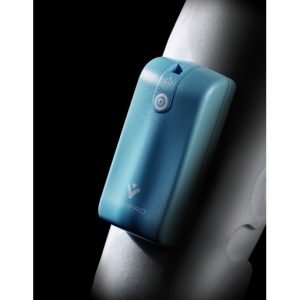
Intermittent pneumatic compression (IPC) devices are used to help prevent blood clots in the deep veins of the legs. The devices use cuffs around the legs that fill with air and squeeze your legs. This increases blood flow through the veins of your legs and helps prevent blood clots. Veins are the blood vessels that bring oxygen-poor blood and waste products back to the heart. Arteries are the blood vessels that bring oxygen-rich blood and nutrients to the body. A deep vein thrombosis (DVT) is a blood clot that forms in a vein deep inside the body. In most cases, this clot forms inside one of the deep veins of the thigh or lower leg.
The veins in your legs have tiny valves that help keep blood moving back up toward the heart. But a DVT may damage one or more of these valves. This causes them to weaken or become leaky. When this happens, blood starts to pool in your legs. This can also happen if you are immobile for a long period of time. Normally, muscles in the leg help blood move up in the veins when the muscles contract.
When blood flows very slowly through the veins, this increases the risk that cells in the blood will stick together and form a clot. DVT is a common condition, especially in people over age 65. Post-thrombotic syndrome affects a large number of people who have had DVT. It can happen in men and women of any age.
DVT is a serious medical condition that can cause swelling, pain, and tenderness in your leg. In some cases, a deep clot in a leg vein can break free and stick in a vessel in the lung. This can cause a blockage in the vessel called a pulmonary embolism. Pulmonary embolism can cause severe shortness of breath and even sudden death. While using an IPC device, your calf or whole leg is enclosed in a cuff. The cuff fills with air and squeezes the leg, much like a blood pressure cuff. Then the cuff deflates and relaxes. The process then repeats over and over. The compression helps move blood through your veins towards your heart. IPC also promotes the natural release of substances in your body that help prevent clots. Between compressions, the cuffs of the device relax, and oxygen-rich blood continues to flow in the arteries of your leg.
Why might I need to use intermittent pneumatic compression devices?
You might need to use IPC devices if you have a high risk of getting a DVT. Anything that slows the movement of blood through your veins increases your risk of DVT. A variety of conditions can increase your chance of getting a DVT, such as:
- Recent surgery, which decreases your mobility and increases inflammation in the body, which can lead to clotting
- Medical conditions that limit your mobility, such as an injury or stroke
- Long periods of travel, which limit your mobility
- Injury to a deep vein
- Inherited blood disorders that increase clotting
- Pregnancy
- Cancer treatment
- Smoking
- Obesity
- Older age
IPC is one way to help prevent DVT. A blood-thinning medicine such as warfarin is also used to treat people who are at high risk for DVT. These medicines may work better than compression devices in preventing DVT. But they have other risks. If you have a high risk of excess bleeding from a blood thinner, your healthcare provider may be more likely to advise IPC instead. In some cases, your provider might advise both blood thinners and IPC. IPC is used most often for people who have just had surgery. It may also be used after a stroke or to help treat lymphedema.

